#european common toad
Note
Hello I would like to request your favourite little freak(amphibian) for day 1432
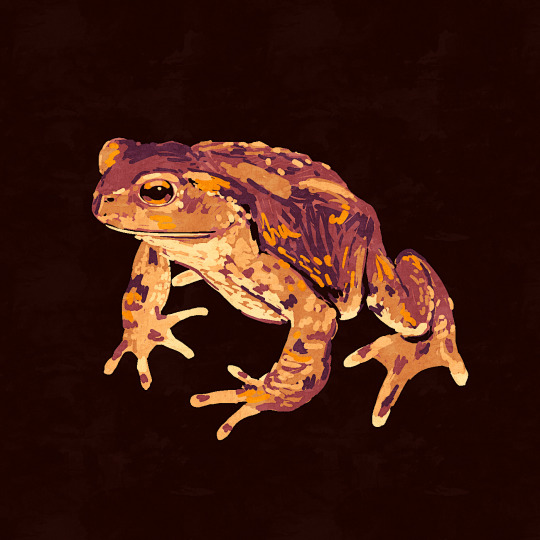
day 1432
#amphibian#frog#toad#european common toad#i had to look up what 1432 means but i think its cute#i interpret this as just my favorite amphibian which is the common toad#i think you can tell from my art that its one of the amphibians i instinctually go for when i have no specific species to draw#i know its a boring answer but its a good frog. plain and simple#and its the one i've actually interracted with the most irl :)#and more specifically we had a toad that lived in the drain in the cellar in a previous house#its where we had all the laundry stuff. so we called him laundry frog. he is like the patron saint of laundry. to me#laundry frog specifically is my favorite little freak#laundry frog#oops i think i forgot to save the alt text#it should be fixed now but i have no idea how that works in relobgs
600 notes
·
View notes
Text
Amphibiuary 2024 Day 23: Common
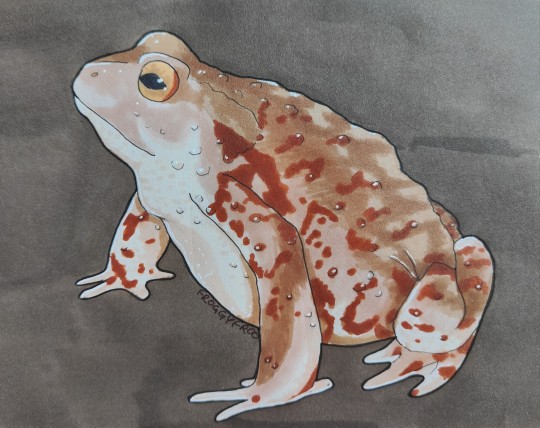
One of my favourite frogs, the European common toad! While they are endangered in the UK, thankfully they are abundant over the rest of Europe.
#amphibiuary2024#common#european common toad#frogs#artists on tumblr#toads#my art#original work#cartoon#cute#cartoon illustration#traditional art#art#traditional illustration#bufo bufo#amphibiuary
89 notes
·
View notes
Text
Bufo bufo




The common toad. Even if they are considered ordinary, I find them beyond precious and worthy of love :)
#toad#frog#amphibian#phrog#frog photo#frog photography#toad photo#phrog photo#herpblr#bufo bufo#common toad#european common toad#bufo#i love toads#lil guy#goblincore#little guy#just a lil guy vibing tbh
47 notes
·
View notes
Text

Reptiles, Amphibia, Fishes and Lower Chordata. Written by Richard Lydekker and others. Illustration by J. Green. Published in 1912.
Internet Archive
147 notes
·
View notes
Text
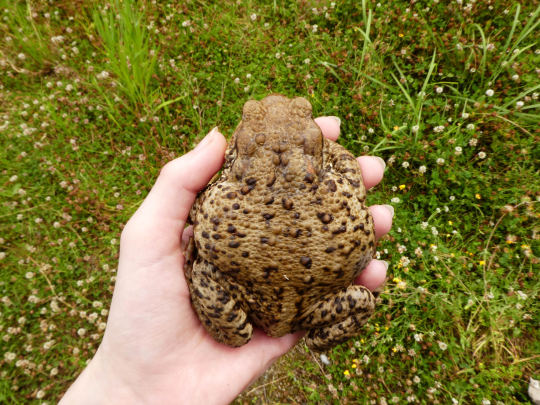
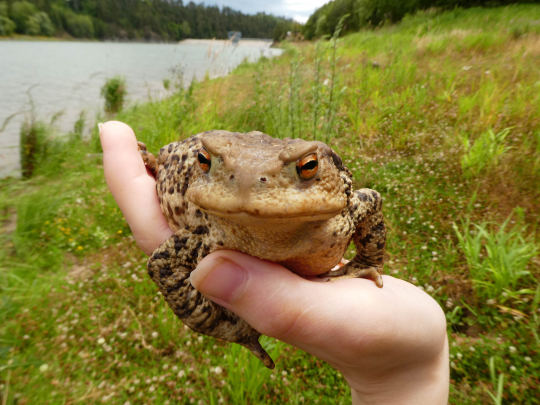
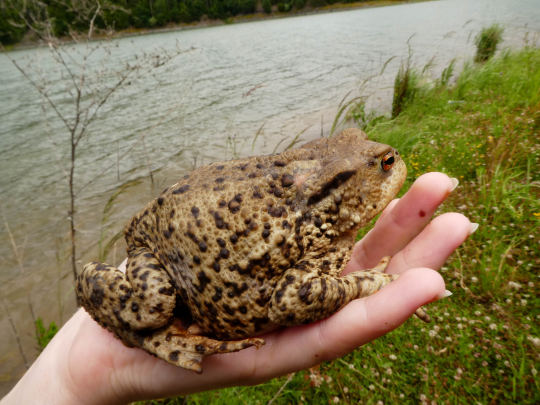

The biggest european toad i have ever seen!
-L.F.
#NICE#common toad#bufo bufo#toad#european toad#ropucha obecná#photography#my photography#big chonky unit#absolute burger of a creature#delightful
74 notes
·
View notes
Text
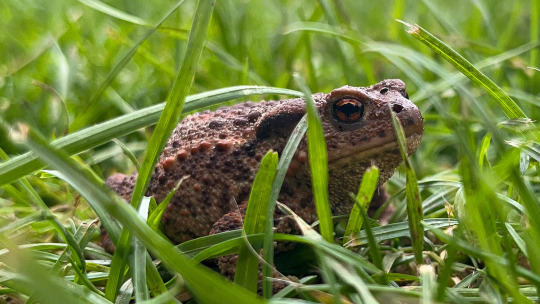
European toad (Bufo bufo)
#bufo bufo#European toad#common toad#toad#toadblr#amphibian#amphibians#animal lover#animal#wild animals#animal photoshoot#animal photography#animals#wildlife photography#wildlife#wildlife pictures#green grass#nature#walking in nature#nature lover#nature photoshoot#nature photography#naturecore#beautiful#beautiful photos#my photo#photography#photooftheday#photoart#forest
44 notes
·
View notes
Text

Happy Froggy Friday with Toadlets!
The European common toad (Bufo bufo) in two variations with bonus toadlets! SciArt from Getreue Abbildungen Naturhistorischer, Bd. 1 (1793), edited by Johann Matthäus Bechstein.
But it's a toad! How can it be part of Froggy Friday?! All toads are frogs, but not all frogs are toads. Learn more about the differences, or should I say similarities.
View more in Biodiversity Heritage Library with thanks to Smithsonian Libraries and Archives for digitizing.
#frogs#toads#toadlets#herpetology#amphibians#froggy friday#frog friday#HistSciArt#Biodiversity Heritage Library#smithsonian libraries
359 notes
·
View notes
Text
I wanted to use my frogposting today to talk about the frogs and toads of palestine!

bufotes viridis, the european green toad, can be found across gaza and the west bank (and also a bunch of europe and north africa!) [📷 peter kaufman]

hyla savignyi, the levantine tree frog, can also be found throughout palestine and is very small (only about 4cm long!) [📷 zeynel cebici]
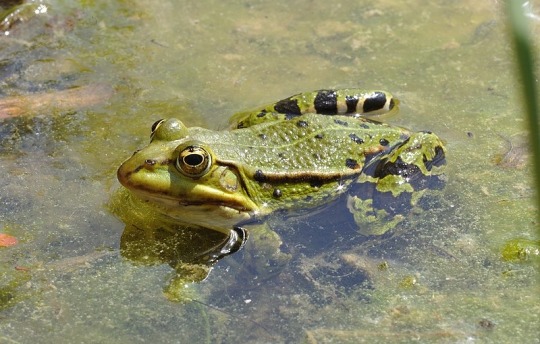
rana ridibunda, the marsh frog, which is also the largest frog in europe! a real frog’s frog [📷 quartl]
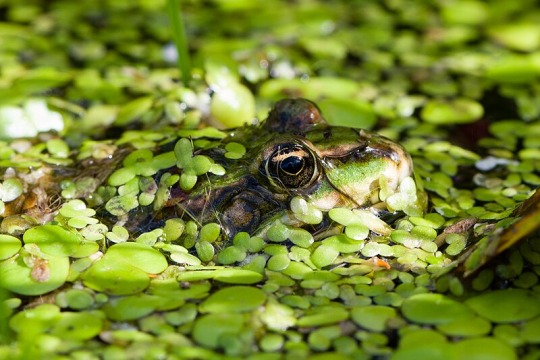
pelophylax esculentus, the pool frog (pictured here very much In The Soup Or Perhaps Spinch), this is the one that they make frog legs with and is found in the dead sea and galilee [📷 tuxyso]

pelobates syriacus, the eastern spadefoot toad, is a threatened species in palestine but is common in places like turkiye and iran [📷 f.c. robiller]
[references: Dr. Sc. Norman Ali Bassam Ali Taher Khalaf-Sakerfalke von Jaffa, “Amphibia Palaestina : The Amphibians of Palestine.” Gazelle vol. 84, 2008]
80 notes
·
View notes
Text
455 notes
·
View notes
Text
The 11 most venomous animals you can find in Germany
Ususlly you would think about exotic species when it comes to venomous animals, particularly species from Australia. Others are so common that they spontaneously don't come to our mind, such as bees, wasps, or hornets.
However, there are indeed venomous species that live in Germany, which can cause discomfort to severe pain, and – in rare cases – death.

Ammen-Dornfinger (Yellow Sac Spider), its fangs can penetrate the human skin and inject poison into the tissue. Symptoms are usually not worse than a bee sting, but can also cause nausea, vomiting, and shivers.
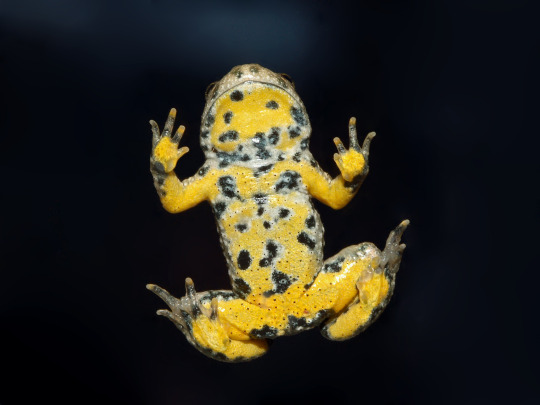
Gelbbauchunke (Yellow-Bellied Toad), the mucus contains a poison that is irritating to the skin and particulaly the mucosa and the eyes.
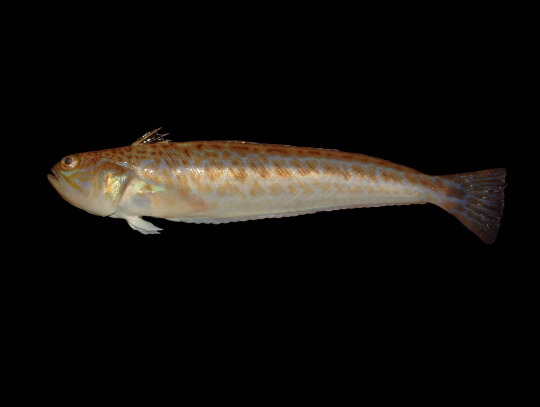
Petermännchen (Weeverfish), likes to bury itself in the ground near sandy beaches so that only the venomous spines stick out, causing a danger to the feet of tourusts. The symptoms include excruciating pain, swelling, redness, heat, neusea, vomiting, joint aches, headache, lightheadedness, increased urination, tremors, and in rare cases abnormal heart rhythm, seizures, gangrene, tissue degeneration, and unconciousness. This fish is considered the most dangerous venomous species that lives in Germany.

Spitzmäuse (Shrews) have venomous teeth. However, they rarely bite humans, and even more rarely have the power topenetrate the skin. They mostly use their venom to kill insects.

Kreuzotter (Common European Viper) are elusive animals, so very few peple have actually seen one. Their venom is three times more poisonous than that of the most dangerous rattlesnake. However, the viper doesn't like to waste its venom, that it also uses for hunting, for defense, and it has a much smaller reservoir. That's why the viper is only dangerous for small children and elderly people. Between 1959 and 2003, no viper-related deaths were recorded, and in 2004, an 81-year-old woman died. Victims often have to be hospitalized, about 10 % of them required ICU treatment. The symptoms include severe swelling, shortness of breath, and heart issues, in rere cases paralysis of the affected limb. On the other hand, numerous cases are known where the victims had no symptoms at all, probably because the viper didn't inject the venom.
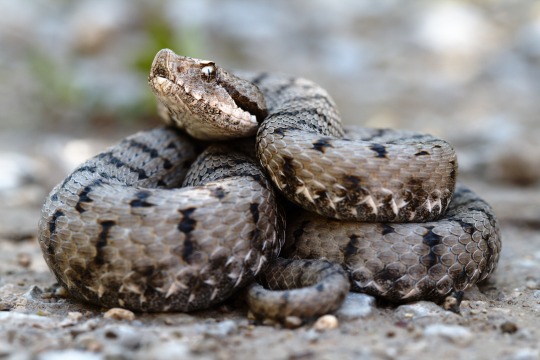
Aspisviper (Aspic Viper) occurs only in the southern parts of the Black Forest and is very rare. The venom is similar to that of the common viper. It is expected to expand its territory in the future due to global warming.
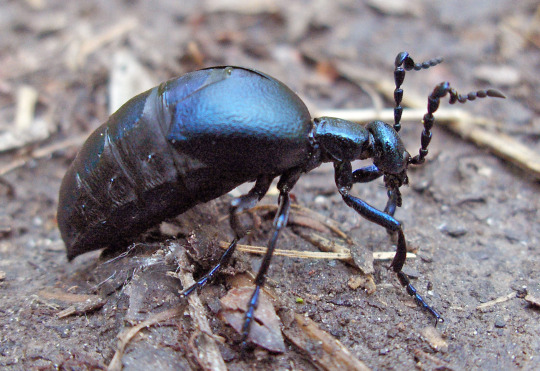
Schwarzblauer Ölkäfer (European Oil Beetle) sprays a substance that is severely irritant to eyes and mucosa.

Eichen-Prozessionsspinner (Oak Processionary), hairs of the larvae easily break off and float through the air. They contain a venom that causes symptoms that reach from mild urticaria to severe dermatitis. If inhaled, the hairs can cause bronchitis, painful cough, and asthma.
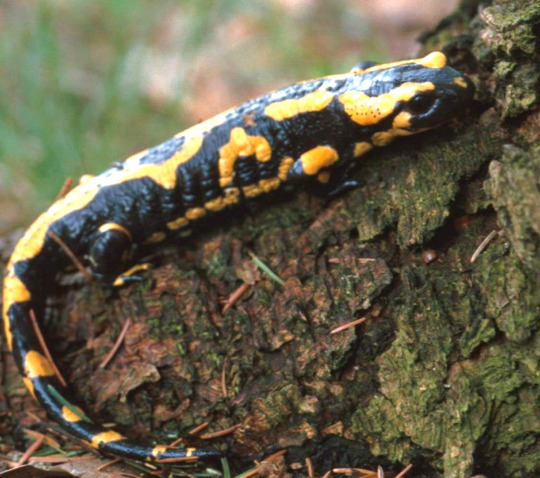
Feuersalamander (Fire Salamander) has venom on the surface of the skin. In humans, it causes a slightly burning sensation on the skin, but it is absolutely deadly for dogs.

Gelbe Haarqualle / Feuerqualle (Lion's Mane Jellyfish): Touching this jellyfish causes excruciating pain, eczema, fever and breathing trouble.

Wasserspinne (Diving Bell Spider) can penetrate the human skin and inject venom. The effects are usually mild and not worse than a bee sting.
315 notes
·
View notes
Photo




The Smooth Newt with the Smooth Moves
Also known as the European newt, northern smooth newt, or common newt (Lissotriton vulgaris), the smooth newt is one of the most common species in Europe and western Asia. It is also the only newt species found in Ireland. There are currently three recognised subspecies distributed throughout this range, and four others have been reclassified as distinct species. The common newt is able to survive in a variety of habitats, including deciduous and coniferous forests, wetlands, meadows, parks, and gardens. Their only requirements are sufficient sunlight and water with sufficient vegetation.
Like most newts, the northern smooth newt spends the majority of its time foraging for food on land. Their diet is carnivorous, consisting of insects, worms, snails, slugs, and larvae. When available, L. vulgaris may also eat the eggs of its own species. In turn, many animals prey on the European newt, including waterbirds, snakes, frogs, and larger newts. To avoid these predators the smooth newt is active mainly at night, and will secrete a toxic mucus when threatened. While active, they are largely solitary but from October to March several individuals will hibernate together under logs or leaf litter burrows.
Almost as soon as the common newt emerges from hibernation, they begin migration to their breeding sites-- usually the ponds in which they spawned. Males undergo a dramatic transformation, growing large crests and becoming brightly colored. When a female enters the water, the male swims around her and sniffs her cloaca. He then vibrates his tail to fan his pheromones towards her. Finally, he will swim away and, if the female is interested, she will follow him. He then deposits a packet of sperm, or spermatophore, that the female picks up for fertilization. Rival males may try to lead the female towards their own spermatophores, and clutches of eggs often have multiple fathers.
Females deposit anywhere from 100 to 500 eggs, each of which is carefully wrapped in aquatic vegetation. Larvae hatch after only 20 days, and quickly begin developing. Unlike frogs and toads, newt larvae have external, feathery gills, and develop their front legs first. After about three months, the larvae absorb their gills and leave the water as newtlets or efts. However, when temperatures are particularly low and aquatic prey is abundant, some adults retain their gills and stay aquatic in a phenomenon known as paedomorphism. These adults are fully capable of sexual reproduction, and when moved to areas with a larger population will often metamorphose into terrestrial adults.
Adult smooth newts are rather small, reaching only 9–11 cm (3.5–4.3 in) and 0.3–5.2 g (0.011–0.183 oz). Males are slightly larger than females. The head and back are dark brown or olive, while the underside is much lighter. Both males and females have dark spots on their bellies, and males also sport a bright orange stripe. In the spring, the colors in males become more vivid and the spots grow larger. Males also develop a large yellow crest that runs from the head to the table, and is dotted with dark bands.
Conservation status: The IUCN has designated the European newt as Least Concern, as it is common over most of its range. Threats include habitat destruction and the introduction of invasive fish species.
If you like what I do, consider leaving a tip or buying me a ko-fi!
Photos
Philip Precey
Derek Middleton
Christoph Moning via iNaturalist
Kristýna Coufalová via iNaturalist
#common newt#smooth newt#Urodela#Salamandridae#newts#salamanders#amphibians#deciduous forests#deciduous forest amphibians#evergreen forests#evergreen forest amphibians#grassland birds#grassland amphibians#wetlands#wetland amphibians#urban fauna#urban amphibians#europe#asia#west asia#animal facts#biology#zoology
147 notes
·
View notes
Text
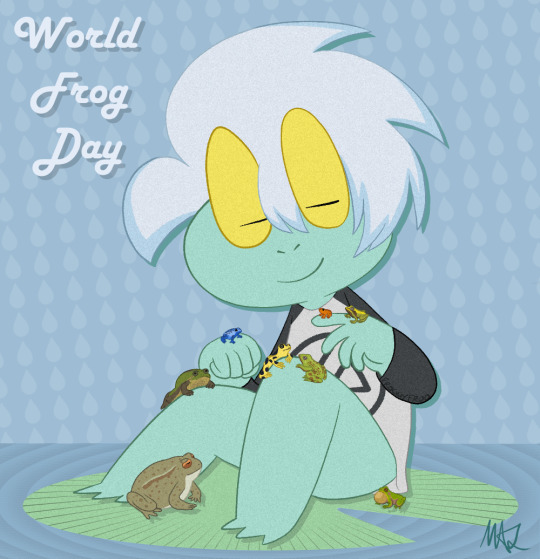
Happy World Frog Day from Zed and some... sort of familiar looking frogs...
#world frog day#silk town spawn#sts zed#frogs#artists on tumblr#original character#cute#digital art#art#digital illustration#cartoon illustration#cartoon#my art#illustration#original work#anthro#furry art#sfw furry#csp#clip studio paint#pool frog#european common toad#pumpkin toadlet#green mantella#blue poison dart frog#dyeing poison dart frog#italian tree frog#paradoxical frog#panamanian golden frog
24 notes
·
View notes
Photo

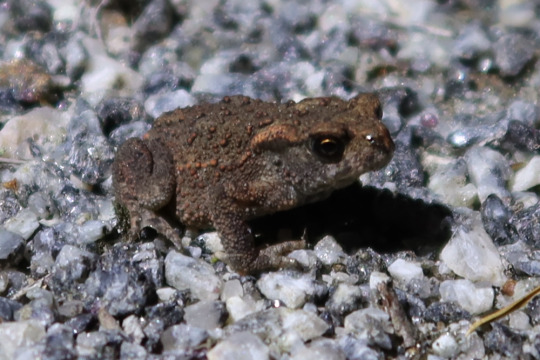
Bufo bufo — common toad a.k.a. European toad
12 notes
·
View notes
Text
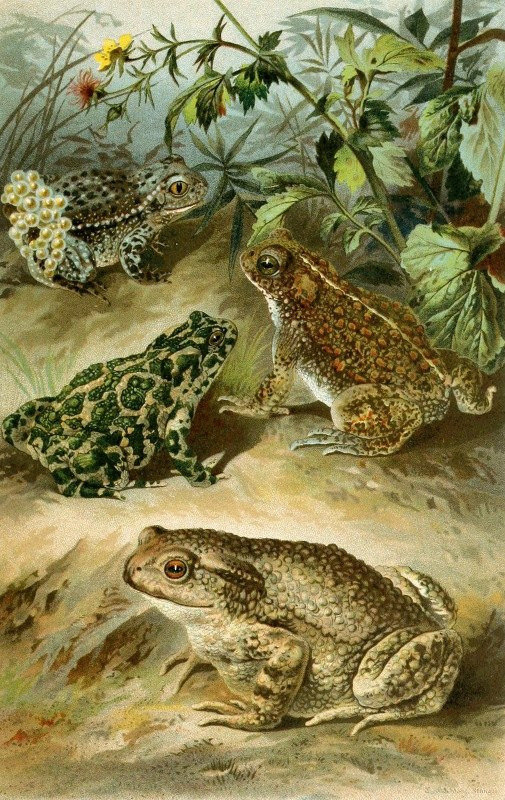
Bufo vulgaris, Bufo viridis, Bufo calamita, Alytes obstetricans (1897). Bruno Dürigen (German, 1853–1930)
#amphibians#toads#common toads#european green toads#natterjack toads#common midwife toads#Bruno Dürigen
327 notes
·
View notes
Text
One time my cat Marcel ran backwards in the room at full speed, made some bunny hops, stuck out his tongue and started rubbing at his tongue with his paws. Weird behaviour of course, and since I couldn't ask him what's up I just went to retrace his steps.
I didn't find anything, until I walked into the hallway, where in the middle of the floor sat a tiny toad. Marcel kept close to me, an gave the toad a wary look, tongue still sticking out.
I quickly looked up the toad and it turned out to be a common European toad which is indeed mildy poisonous to mammals, but it's just a poison of Taste Very Bad. His tongue was irritated for a few more minutes and then he was fine again. The toad turned out to be a junivile, and I let him outside, unharmed.
So, turns out Tasting Bad is a pretty good defensive mechanism if you are a tiny squeaky toy looking animal.

also look at this extremely upset little guy I found on the wiki
4 notes
·
View notes
Photo
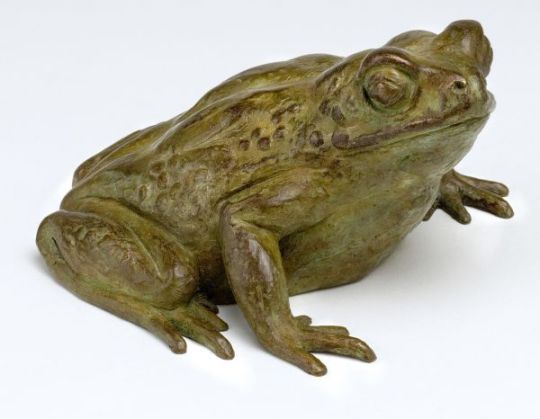

A sculpture titled 'Common European Toad (Bronze life size statuettes)' by sculptor Camilla Le May. In a medium of Bronze and in an edition of 6/12.
3 notes
·
View notes